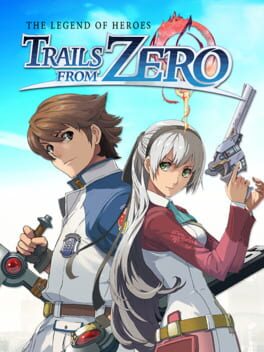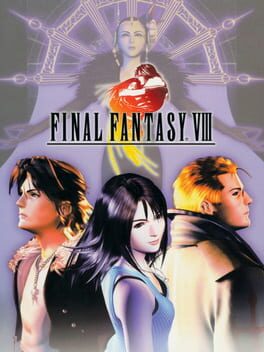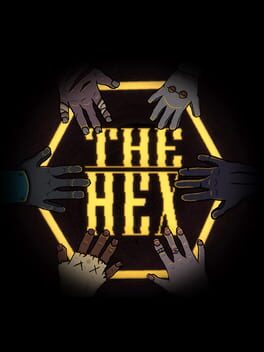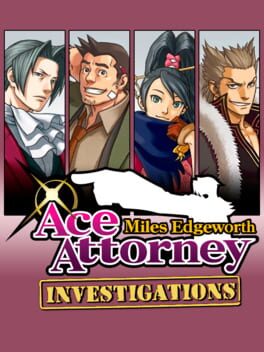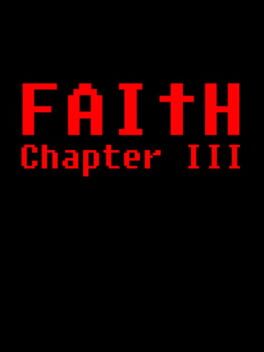she/her, trans
ina
tales of berseria fan account
Badges

GOTY '23
Participated in the 2023 Game of the Year Event

Pinged
Mentioned by another user

GOTY '22
Participated in the 2022 Game of the Year Event

Listed
Created 10+ public lists

Famous
Gained 100+ followers

Gone Gold
Received 5+ likes on a review while featured on the front page

Organized
Created a list folder with 5+ lists

Best Friends
Become mutual friends with at least 3 others

Donor
Liked 50+ reviews / lists

Roadtrip
Voted for at least 3 features on the roadmap

3 Years of Service
Being part of the Backloggd community for 3 years

GOTY '21
Participated in the 2021 Game of the Year Event

Treasured
Gained 750+ total review likes

Full-Time
Journaled games once a day for a month straight

Trend Setter
Gained 50+ followers

Adored
Gained 300+ total review likes

Well Written
Gained 10+ likes on a single review

Loved
Gained 100+ total review likes

Popular
Gained 15+ followers

On Schedule
Journaled games once a day for a week straight

Liked
Gained 10+ total review likes

Noticed
Gained 3+ followers

Gamer
Played 250+ games

N00b
Played 100+ games
Favorite Games
350
Total Games Played
010
Played in 2024
044
Games Backloggd
Recently Played See More
Recently Reviewed See More
The shift towards investigating with the intent to prosecute crimes places a greater focus on the methodology of the acts you’re looking into, and cases are generally speaking really complex in this game, and less structured, which I think is good. Investigations are more dynamic to begin with just by virtue of moving a little guy around a usually pretty limited screen, which drastically reduces pixel hunting – but they also only go as long as they need to because you’re not inhibited by the two-or-three day long trial system. It leads to a more natural progression. Edgeworth’s special logic minigame where he pieces together little bits of information in his mind as he collects them is unfortunately simple the whole time but it doesn’t ever stop being satisfying in the way that getting an answer right in these games almost always is. That’s the saving grace of the game – the act of playing Ace Attorney simply feels good.
The grace needs to be saved because the PACING is completely dreadful the entire time. There’s no punch, no drama to any of the cases here. Not even one time do you nail a villain at the end of a chapter with a big drop of a huge reveal or a satisfying click of a puzzle piece coming together. More than once I was caught off guard when I finished a case because I didn’t realize that the small, mundane piece of information I’d just revealed was going to be the clincher. This is at its worst in the final case, which might be the longest finale in the series, or maybe it only FEELS like it is, because it is so deeply tied to the previous case and it completely solved all of the emotional arcs of every major character roughly two hours before the game ends. Yeah you wrap up your spunky teenaged sidekick’s traumatic backstory, you earn the respect and friendship of the interpol detective who hates prosecutors, you solve the decade-old mystery of the phantom thief that’s haunted the game.
But what’s this? You have to catch the guy who runs the smuggling ring! Who killed….some guy! And it’s SO easy. Not once in this sequence did I find myself unable to immediately guess the correct answer to a riddle fifteen minutes before I was allowed to present it, and we are CONSTANTLY being interrupted by new characters storming into the room not to save the day but to do comedy bits. It doesn’t really spoil the mood though because there’s NOT really a mood to spoil because like I’ve mentioned nobody really cares at this point beyond the basic principle of not liking asshole murderers getting away with it!
On the subject of Too Many Characters, this is a place where the game strikes me as particularly insecure. This game is a nonstop parade of guys I Did Not Need To See Again. Why is Maggie Byrde making her third appearance? Why is Officer Meeks here for one scene? How do we, as a polite society, keep letting Wendy Oldbag have bigger and bigger roles in these games even though she continues to have One Joke and it Sucks Ass??? It’s tough because it sucks in both directions. On one hand, everybody involved in this series (including Shu Takumi, he is not innocent here) should be tried in a criminal court for the character assassination of Larry Butz, who in the first game was a kind of mean and stupid guy who is unlucky in love but ultimately has a heart of gold and is a key person in the lives of both of his friends and over time has become a moronic creep who will try to fuck any child he meets and doesn’t understand most of the things that come out of his own mouth. On the other hand I would love to spend more time with Ema Skye, I would love to check in with her, see what she’s up to, hear all about what she’s got going on. There’s a lot of potential for that character, especially free from the shadow of her big story in the re-release of Ace Attorney 1. Why is she only in one screen of the entire game?? If she’s gonna be here she should be here. It feels weird and desperate, like they’re scared I won’t like the game if they don’t constantly jangle keys in the shape of guys I remember in front of my face.
It’s a shame too because I do think the original characters are the actual best part of the game. I like Ema but I think in her original appearance she’s way too much of a Maya clone, distinguished mostly by having a Different Gimmick rather than a different personality. Kay Faraday is a completely different genre of spunky teen sidekick than either of the previous girls, and I find her endlessly funny and charming. Aggressively weird and goofy and cool and with a very fun gimmick that she clings to based on a series of genuinely affecting tragedies. Everyone in her orbit rocks too, Callisto Yew and Detective Badd both hall of fame Ace Attorney guys. Lang’s drama is not convincing to me but his connection to Shih-na is and his reactions to how their relationship evolves salvage him for me, and his affection for his subordinates is by far the funniest joke in the entire series. The original stuff here is consistently the best shit in the game. I wish it felt like they knew that.
For the first game that as far as I know had zero involvement from the series creator, it’s really interesting to see how it feels the same and how it feels different, and where it’s successful and where it’s not. I think the flaws are desperately glaring, and they are unfortunately mostly play-related, but the moment-to-moment act of Doing Ace Attorney is maybe the best it’s ever been. I just wish it was remotely as impactful as it ever had been in the past.
Penda’s Fen is about Stephen, the son of a pastor in the English countryside who is struggling through his last year of finishing school, struggling with his latent homosexuality, soon struggling with his conservatism, his faith, his understanding of English history, his understanding of church history, his understanding of his own history. These things manifest themselves as nightmares and hallucinations and eventually visions of imagined conversations and confrontations as Stephen begins to finally process what he imagines to be his weaknesses as he comes to a personal understanding of the violences imposed upon him by a stifling, cruel social order. The final sequence of the film (which you can basically only watch on youtube, and you can and should even though I am going to talk extensively about it here – it’s a very vibes-based experience) is a vision of Stephen on the hill where King Penda, the last Anglo-Saxon king in England and for whom Stephen’s town of Pinvin is named, was killed. He is visited by the spirits of modern British christofascism, who beckon him for the second time in such dreams, try to convince him that he is a chosen child, that he deserves to be their heir, that he will do great work with them and for them. When he rejects them he has to be saved from their wrath (“if we can’t have him no one can,” the Sick Mother says to the Sick Father) by the spirit of King Penda, who asks Stephen to “be secret. Child, be strange, dark, true, impure, and dissonant. Cherish our flame.” And Stephen silently begins his trek down the hill, to the town, to live his life with his eyes open, and under his own agency.
He is not so unlike John Ward. John is a pastor whose life as we know it is defined by his weakness, his victimhood, and his immutable desire to go one in spite of these things. Over the course of the trilogy we see, via flashbacks and visions and nightmares, John’s greatest moment of weakness – failing to exorcise Amy Miller, and in revisiting this moment over and over again the depth of his cowardice comes out. He goes so far as to make a deal with a demon (in disguise but a poor one) to escape the Miller home rather than try to salvage the situation or save the girl, knowing and even swearing that this act will seal her to the worst fate of anyone in the story, to be the vessel for the ultimate evil of the setting. Despite his collar, John doesn’t have faith in his God. It wasn’t strong enough when it mattered, and then it was lost, and it’s barely powerful enough to scrape him by when he needs it today. But he is driven to correct his mistakes, even if he has to suffer for them. And slowly, over the course of all three games, and conditional on the player intuiting the right course of action for John’s wellbeing, he can do this. He can save Amy, he can save his childhood sister figure Lisa from a similar fate, he can protect Father Garcia where he failed to protect his original mentor, he can rid himself of the demonic influence that has hung over his life since he and Lisa were victims of demonic ritual in their orphanage, and he will save the world from the profane sabbath.
Faith Chapter II introduced the idea that the cult recruits and preys upon the socially vulnerable, and Chapter III elaborates upon this idea, setting itself entirely within cult-run facilities: a maternity clinic, an apartment building, and a daycare center. This is an evolution of the origins of the cult, where one of the trilogy’s main villains, Sister Miriam, began the terrible practices that have evolved into the modern leadup to the Profane Sabbath by running an orphanage where she killed and experimented upon the children living there, including John and Lisa. Now her son Gary leads the proceedings towards the end of the world, where he steals babies from pregnant women and tells them they miscarried, or uses them to spawn devil children, and uses his tenants as fodder for his true demonic guests, and teaches the children in his daycare all sorts of things about the new, profane world that is going to arrive before they’re even familiar with the current one, all while beneath their feet the true cult actively works to make that world happen in their underground network of caves and tunnels.
This plays into Satanic panic stuff that has permeated the trilogy, unfounded anxieties by America’s far right and their impressionable suburban retinue about the dangers of abortion clinics and daycare facilities and urbanization and cohabitation; some of the ironic humor from past games is still there too – an example that springs to mind is Gary’s letter to the apartment complex warning them to avoid the demon haunting the building at all costs because it WILL kill them if it finds them, which details (inaccurate) instructions on how to do so, a memo that ends with a lighthearted note about rent collection and cost increases in a faux-affable tone that anyone with a corporate landlord will be intimately familiar with. Satanic Panic wasn’t just a quirky moment of hysteria in America’s past, though, it was a calculated cultural maneuver by the political right to stoke fear that would enable them to grab power and restrict freedoms, to exercise a fascistic view of who Americans Were and what Americans Should Look And Act Like against people who were Poor, Immoral, Unchristian, Nonwhite, and Antiauthoritarian. The police are the force we see actively fighting the cult more than anyone else throughout Faith and I don’t think that’s an accident.
Where a lot of media that inspired Faith is alternately directly or incidentally right wing in social messaging, or depicts the devilish as liberatory, Faith posits a world where these panicked, manufactured fears are real, and subverted against the people they’re designed to help. Something that lots of media in these sorts of spaces neglects when it comes to addressing the ways people create spaces for the marginalized is how fragile these spaces are – how vulnerable to attacks external but also infiltration by subversive power.
The important thing to understand here is that while John may be a man of the cloth with his restored faith by the end of the series, his restored power, the thing that enables him to do all of this, is not the Church. It’s arguably not God either. He is explicitly acting outside or against the orders of the Church throughout the trilogy. His entire life has been steered by institutions, whether he knows it or not, and they have each imposed their ideology upon him violently, to their gain and his personal suffering. He is a victim as much as any of the people he saves. The cult unmade and remade John. It implanted in him doubt, and fear, and demons personal and literal. His traumas inform his personage. They impose their ideology upon all of their acolytes, willingly or unwillingly, through isolation, manipulation, carrot-dangling, coercion, and violence. But the Church is not very different from this, at least to John. His time with the Church is objectively harmful to him. It’s arguable that he was put into situations he wasn’t ready for, wasn’t prepared for, that he was meat for the grinder of the exorcist cause. He is manipulated by Father Garcia into continuing a fight he has lost, and there are versions of the events of this game where he’s forced at gunpoint to finish it. John doesn’t derive sustenance from his faith, he only derives power from it. Nearly everything he gets from the Church is violently imposed upon him, too.
The only overtly supernatural element of Penda’s Fen, the only weird thing that is absolutely 100% tangibly happening outside of the psychoscape of the main character, is that there is a government facility dug underground, underneath the beautiful hills of the pastoral countryside, where some military experiments are happening. Midway through the film some teenagers are driving around late at night, a boy gets out of the car to pee, and stumbles across the facility, and whatever is in there maims him horribly. It’s unclear whether he’ll live. It’s a short sequence, and not revisited, but this is the ultimate wound at the heart of the film: that the hills, the country, the pagan pastures that symbolize freedom from repression and the cultural violence of British modernity IS in fact hollowed out and infiltrated by those same things and there's nowhere to really and truly get away from it. But that doesn’t mean you give into it. That doesn’t mean you become it. You still have to be strange, and dark, and true, and impure, and dissonant, and cherish our flame, as King Penda tells Stephen at the end of the film.
At the end of Faith Chapter III, when all the cultists are killed, and the demons are exorcised, or banished, and Amy Martin is finally put to rest, John is given a choice. The Unspeakable, the abominable horror that caused all of these problems for all these decades, that directed Sister Miriam and dealt with Gary and possessed Amy and was the recipient of the Profane Sabbath, was not defeated, only repelled. Garcia plans to dedicate his life to hunting and killing it. He’ll do this forever. When it’s done, he’ll find another demon to hunt. He’ll do it until he dies. He wants John to come with him. He wants soldiers.
Lisa asks John to put down the cross, to come with her. She doesn’t know where they’ll go, or what they’ll do, but she knows him, and she knows their history, and that they’re both victims, survivors, people without identities who for the first time, ever, have the freedom to figure themselves out if they’re only brave enough to take the first step. And she knows John can’t take that step with that collar around his throat.
If John chooses to go with Garcia, the ending is borderline comical in its machismo. They clasp hands, John says “Let’s hunt some demons,” and they drive off together into a surely badass future. But it’s hollow. John has learned conviction but he hasn’t learned anything else except how to be the person he was raised to be. Going with Lisa feels more true to the John we’ve gotten to know – the weak, morally frail man who found himself in the people he chose to love, radically, despite himself, and despite both sides of his social conditioning telling him at various points that his various mercies would be wrong to perform. John and Lisa also drive into an uncertain future, but first they clasp hands, not in the badass bro-ey way that he does in the Garcia ending but tenderly, fingers intertwined. In both endings the Unspeakable is out there. It could do all this again. An apocalypse was averted but it very much began, and we don’t know what the world looks like, really. But in one of them John is still tied to an institution that molded him into someone who couldn’t be good to other people. In the other he and Lisa are strange, and dark, and true, and impure, and dissonant. But they carry the flame. And it’s hard to believe they won’t be able to make something out of that.
Both series sit in a kind of moderately successful space between serious homage to their chosen genres and loving parody with that 80s style of MST3K-esque attitude that is inescapable in works from a certain flavor of 80s nerd culture, but Space Quest feels moderately more sober much of the time. The narrator may be as sardonic as ever, the joke may be that you’re a janitor tasked with saving the galaxy, but there’s still a great deal more mundane death and terror here than is typical of its contemporary Sierra stuff, the villains really straight laced and scary, the danger imminent and prowling. Maybe it was a conscious decision around the time - King’s Quest III would see a similar tonal shift with its slave narrative and wizard villain only a month after this game’s release.
That’s not to say there’s no humor - there’s quite a lot of it, but outside of the diner set piece and a couple of interactions with NPCs that play more like easter eggs than meaningful bits of story, it’s mostly limited to narration and fail screens. My understanding is that this becomes The Comedy Series much more explicitly than King’s Quest does so this was a bit of a surprise for me.
Space Quest feels like it carries an ambition to genuinely thrill the player, to push the limits of visual interactivity in adventure games. There are so many cutscenes in this game, so many sound effects and cinematic screens and animations. Stuff that’s genuinely breathtaking on the hardware this shit runs on, in the year it came out. This would have been thrillingly realistic stuff. It’s still cool today.
I wish it was all in service of a game that was a little less dull. Space Quest is a much more linear affair than any of the three King’s Quests I’ve played, or Colonel’s Bequest, which is fine, good even. But it did also mean that it was rare for me to find myself in a situation where I was genuinely teasing my brain, too. Environments being so closed, with so few characters to interact with and so few ways to investigate problems meant that solutions were usually immediately clear, or revealed after a relatively quick moina of the available space. This does, interestingly, mean that there’s a greater reliance on player dexterity - limiting your movement by having you be pursued by a killer robot for a quarter of the game, or a bridge that comes closer to collapsing every time you cross back and forth over it, or asking the player to avoid physical death obstacles via character movement rather than puzzle solving. These things feel somewhat artificial in the way they impede the player’s ability to progress what might otherwise be a too-simple series of puzzles, but if I were to look at it more generously, which I am always inclined to do, I would say they also feel like a young company trying to figure out fresh ways to stretch the legs of a still pretty new genre. Adventure games certainly weren’t new, but ones with GRAPHICS were, and the idea of the player character’s little avatar really having a presence beyond picking things up and putting them down properly was news! Which sounds wild but norms have to be established! This game is interacted with via a text parser.
And to its credit also I would rather a game be too easy than too hard. I think there is only one truly, genuinely evil moment where this game makes itself unfinishable, where you need to pick a piece of invisible glass up off the ground like an hour before you need it and you don’t need it until after crossing a threshold you can’t return from. This piece of glass is located somewhere I would say is only moderately intuitive to investigate, and if you don’t grab it in a very specific timeframe it becomes basically impossible to retrieve even before you can’t return to that screen.
But that’s the only one. There are other ways to fuck yourself but I think they’re much more player-faulty. It’s fine to let the player dig their own grave, I think, and these games encourage keeping like nine saves to a degree that I don’t think having these kinds of situations is really all that big of a deal - recovering progress goes quickly once you know the tricks.
I think writing about this has made me like it more, which is always a nice feeling to have, but I’m still kind of taken by a feeling of apathy, mostly. Now that I’ve tasted how much Sierra will be pushing the envelope only a couple years from now, I can’t help but go to sleep thinking of Roger Wilco, and dream of Laura Bow.
